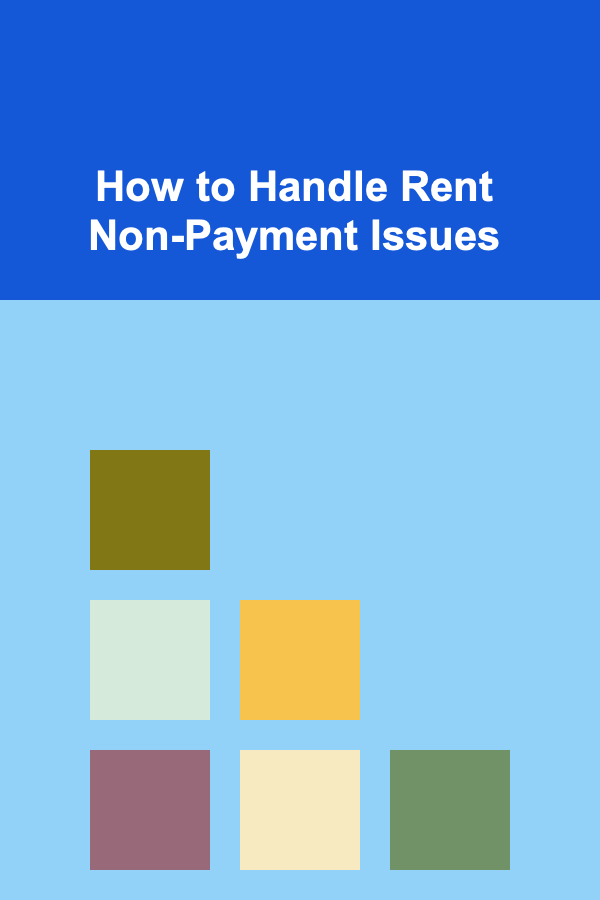
How to Crochet a Scarf: A Cozy Project Checklist
ebook include PDF & Audio bundle (Micro Guide)
$12.99$11.99
Limited Time Offer! Order within the next:

Crocheting a scarf is a perfect project for beginners and seasoned crafters alike. Not only is it a practical and cozy item, but it's also a highly customizable piece that allows for creativity in terms of color, texture, and design. Whether you're crafting for yourself or as a gift, a crocheted scarf can be a meaningful and enjoyable project. In this guide, we'll walk you through the process of crocheting a scarf with a comprehensive checklist that covers everything from materials to finishing touches.
Materials Needed for Crocheting a Scarf
Before you start, it's important to gather all the materials you'll need for your scarf project. Having everything at hand will help you stay organized and minimize interruptions as you crochet.
1. Yarn
Yarn is the most important material for crocheting a scarf, and choosing the right type can make all the difference in the finished product. Here's what you should consider when selecting yarn:
- Weight: For a cozy scarf, choose a medium-weight yarn, often labeled as worsted weight (4). It strikes a balance between thickness and ease of work.
- Fiber Content: Wool is a popular choice for scarves as it's soft and warm, but you can also choose yarns made from cotton, acrylic, or a wool blend.
- Color: The color of your scarf is a chance to express creativity. Consider choosing a color that complements your wardrobe or the preferences of the person you're making the scarf for.
2. Crochet Hook
The size of the crochet hook you choose will depend on the yarn you are using. The yarn label typically provides a recommended hook size, which is a good starting point. For worsted weight yarn, a 5.5mm (I-9) or 6mm (J-10) hook is ideal.
3. Scissors
You'll need a pair of scissors to cut your yarn when you finish your scarf or when you need to make adjustments during the project.
4. Yarn Needle
A yarn needle is necessary for weaving in the ends of the yarn after finishing the scarf. This ensures a clean and polished look.
5. Measuring Tape (Optional)
If you want to make sure your scarf reaches a specific length, a measuring tape will help you track your progress.
Step-by-Step Process for Crocheting a Scarf
Once you have all the necessary materials, it's time to dive into the process. Crocheting a scarf involves a few simple steps that will guide you through the entire project.
1. Choose Your Scarf Pattern
Before you start crocheting, decide on the pattern you want to follow. There are various styles of scarves, from simple single crochet to more intricate patterns like shell stitches, chevrons, or cables.
Here are some beginner-friendly crochet stitch patterns for scarves:
- Single Crochet (Sc): This is the most basic stitch and creates a tight, smooth fabric. It's great for beginners who are just starting out.
- Double Crochet (Dc): This stitch is slightly taller than the single crochet and creates a looser, more open fabric.
- Half Double Crochet (Hdc): A stitch that is between single and double crochet in height, it provides a balanced texture for your scarf.
If you're new to crochet, starting with a basic stitch like single crochet or half double crochet is a great way to get comfortable with the technique before experimenting with more complex patterns.
2. Make the Foundation Chain
Start by creating a foundation chain that will determine the width of your scarf. To make the chain:
- Start with a Slip Knot: Create a slip knot at the end of your yarn and place it on your crochet hook.
- Chain the Desired Length: Yarn over and pull through to create the chain. For a standard scarf width, aim for about 20 to 30 chains, depending on how wide you want your scarf to be. You can always adjust the length later if needed.
Remember, your foundation chain should be a multiple of the stitch you'll be using. For example, if you are using a pattern with double crochet, make sure your chain is divisible by the stitch count for the chosen pattern.
3. Begin Crocheting the Scarf
Once you have your foundation chain, you can start crocheting the scarf. The next steps will depend on the stitch pattern you've chosen.
- Row 1: Turn your work around (so you'll be working into the other side of the chain). Start by making the first row of your desired stitch (single crochet, half double crochet, etc.). For example, if you're doing single crochet, insert your hook into the second chain from the hook, yarn over, pull through, then yarn over again and pull through both loops on the hook. Repeat across the entire foundation chain.
- Subsequent Rows: For each new row, turn your work and repeat the chosen stitch. Depending on the pattern, you might need to add a turning chain at the beginning of each row (e.g., for double crochet, chain 3 at the beginning of each row). Be sure to follow your chosen pattern closely.
4. Continue Crocheting Until the Desired Length
Once you've completed your first few rows, you'll get into the rhythm of crocheting. Continue crocheting rows until the scarf reaches your desired length. Generally, a scarf can range from 60 to 70 inches in length, depending on how long you want it to be.
5. Finish Off Your Scarf
When your scarf has reached the desired length, it's time to finish it off. Here's how:
- Last Row: Finish with the last row of your chosen stitch. For some patterns, you may need to do a final row of slip stitches to create a cleaner edge.
- Cut the Yarn: Once you've finished the last row, cut the yarn, leaving a few inches of tail. Pull the yarn through the last loop and tighten it to secure the end.
Finishing Touches for Your Scarf
Once the main part of your scarf is complete, there are a few finishing touches to make it look professional.
1. Weave in the Ends
Use your yarn needle to weave in any loose ends from the beginning and end of your scarf. This will prevent the scarf from unraveling and give it a neat appearance. Be sure to weave the ends in securely, so they don't come loose with use.
2. Add Fringe (Optional)
If you want to add a decorative touch to your scarf, you can add fringe to both ends. To do this, cut several strands of yarn to your desired length, then fold them in half and attach them to the edge of your scarf using a crochet hook.
- Insert the hook into the edge of the scarf, pull a loop of yarn through, and then pull the ends of the yarn through the loop to create a knot.
- Repeat along the edge until you've added fringe to both ends of the scarf.
3. Block the Scarf (Optional)
If your scarf is made with a more delicate yarn, you can block it to help it maintain its shape and smooth out any uneven stitches. To block your scarf, dampen it with water, lay it flat on a towel, and gently stretch it to the desired dimensions. Allow it to air dry.
Tips for Success
Here are some helpful tips to ensure your crocheted scarf turns out just as you envisioned:
- Practice Before You Start: If you're new to crochet, it's a good idea to practice a few rows of the stitch you'll be using before starting your scarf.
- Maintain Even Tension: Keep your tension even throughout the project to ensure your scarf has a uniform look.
- Choose Comfortable Yarn: Make sure the yarn you select feels comfortable to work with and is not too thick or thin for your hook size.
- Experiment with Patterns: Once you're comfortable with the basics, feel free to experiment with different stitch patterns to add texture and interest to your scarf.
Conclusion
Crocheting a scarf is a gratifying project that yields both a practical and personalized accessory. By following this checklist, you'll be able to create a beautiful scarf that you can wear or give as a thoughtful gift. With the right materials, a clear pattern, and a little bit of practice, you'll be crocheting scarves for years to come. Whether you stick to classic stitches or branch out into intricate designs, this cozy project is sure to bring warmth and style into your life.
Reading More From Our Other Websites
- [Organization Tip 101] How to Use Repurposed Furniture for Additional Storage
- [Home Holiday Decoration 101] How to Use Holiday Decor to Make Your Small Space Feel Bigger
- [Home Cleaning 101] How to Maintain a Clean Home When You Have Small Kids
- [Home Storage Solution 101] How to Use Multifunctional Furniture for Storage in Small Apartments
- [Organization Tip 101] Step-by-Step Guide to Building a Solid Foundation for Your Garden Shed
- [Personal Care Tips 101] How to Use Conditioner to Tame Frizzy Hair
- [Personal Care Tips 101] How to Use High-Intensity Interval Training (HIIT) to Lose Weight
- [Personal Finance Management 101] How to Manage Debt and Improve Your Credit Score
- [Home Rental Property 101] How to Spot Houses for Rent with a Pool: Maximizing Your Outdoor Space
- [Home Rental Property 101] How to Optimize Your Short-Term Rentals for Maximum Profitability

How to Handle Rent Non-Payment Issues
Read More
How to Offer Online Video Production Classes for Global Students: A Step-by-Step Guide
Read More
How to Organize Your Luxury Travel Wardrobe
Read More
Political Philosophy: Critiquing Systems of Government and Ideologies
Read More
How to Invest in Global Markets
Read More
How to Generate Passive Profit Streams
Read MoreOther Products

How to Handle Rent Non-Payment Issues
Read More
How to Offer Online Video Production Classes for Global Students: A Step-by-Step Guide
Read More
How to Organize Your Luxury Travel Wardrobe
Read More
Political Philosophy: Critiquing Systems of Government and Ideologies
Read More
How to Invest in Global Markets
Read More